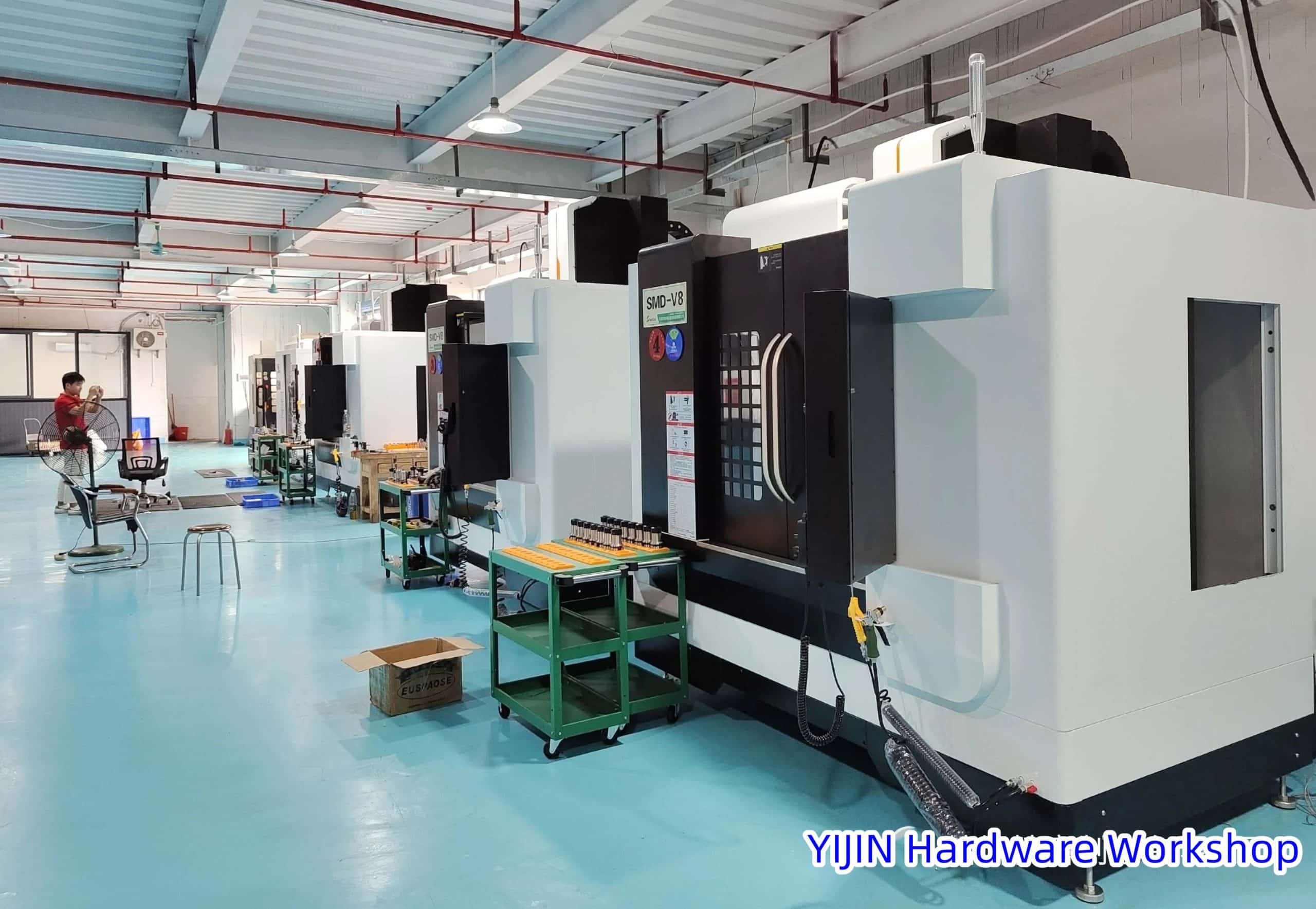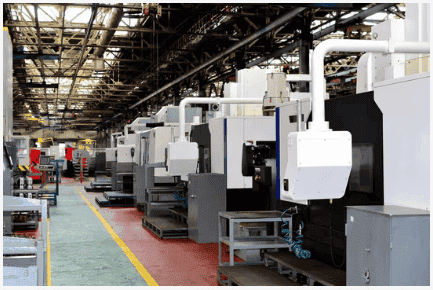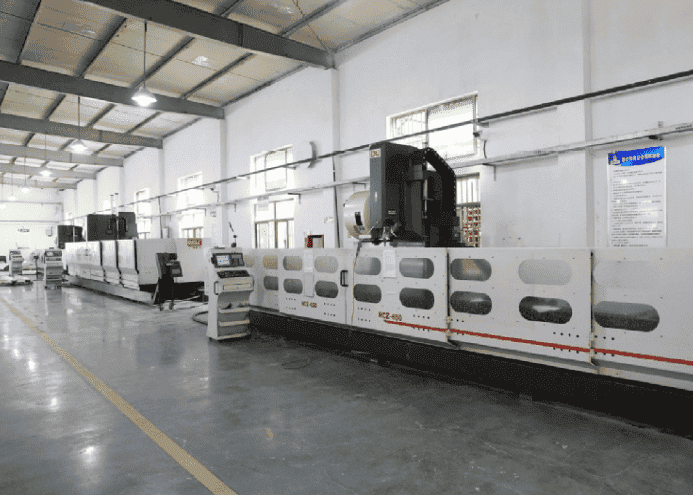I. Introduction
In the world of modern manufacturing, technology took several steps ahead in the form of evaluation from shaping the raw material into précised engineering components.
At the forefront of this transformative shift, we find Computer Numerical Control (CNC) machining, an advanced technique that has surpassed the older methods in various industries.
This introduction explores the remarkable benefits that CNC machining offers compared to its traditional counterparts, revealing the technological, economic, and practical factors that have pushed CNC machining to the front of modern manufacturing processes.
As we delve into the intricate aspects, we will discover the precise mechanisms and efficiencies that set CNC machining apart, establishing it as a powerful driver in the quest for accuracy, consistency, and operational excellence in manufacturing.
II. Understanding Traditional Machining
Description of Traditional Machining:
The traditional method is the old way of shaping and removing the material and it requires very skilled labor. They use lots of tools such as lathe machining, milling machine, grinder, etc to give the raw material its desired shape.
These techniques have been around for ages and are known for their human touch – the direct involvement of skilled hands in controlling those fancy machinery.
The art of traditional machining relies heavily on the skill and know-how of the operator to obtain accuracy and excellence in the result.
Through the physical manipulation of tools and careful calibration of machine settings, the desired forms and measurements are brought to life.
It is this hands-on technique that sets traditional machining apart from its automated and computer-controlled counterparts.
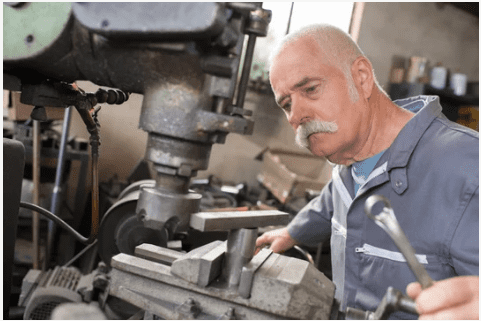
Common Uses and Benefits of Traditional Machining:
- Versatility: The traditional method of machining is more versatile, and it is more suitable for all materials including cast iron, stainless steel, and aluminum. It can be used in the aerospace, automobile, and medical industry.
- Customization: Skilled craftsmen can customize the product into any desired shape and it can be widely used in the low-mass production industry.
- Skill-Based Craftsmanship: Traditional machining mainly depends upon skilled craftsmen and labor. Skilled machinists can create intricate and complex components with a high degree of precision, especially in jobs that require a human touch.
- Cost-Effective for Small Runs: Traditional machining is very cost-effective for small production because it eliminates high setup costs which are required for another automatic machining process so, the traditional method will be very suitable for small production.
- Repair and Maintenance: Traditional machining undergoes excessive repair and maintenance work. Machinists can refurbish or recreate specific components for machinery or equipment that might not be readily available.
III. Introduction to CNC Machining
Now, let’s dive deep into Basics of CNC Machining: CNC machining is the process of controlling the motion and functionality of machining equipment, including mills, lathes, routers, and grinders, using computerized systems.
Through a set of programmed instructions, often in the form of a Computer-Aided Design (CAD) file, CNC machines precisely and automatically execute a series of manufacturing tasks.
These instructions guide the machine’s movements, toolpath, and other parameters, resulting in highly accurate and repeatable production processes.
Common Uses and Benefits of CNC Machining:
- Precision and Accuracy: CNC machining helps to give accuracy and precision to components. The computerized control minimizes the margin of error, leading to consistent and high-quality output, particularly in complex geometries.
- Efficiency and Speed: The automation that comes with CNC machining greatly accelerates the production process. The ability to run continuously and execute programmed tasks swiftly enhances overall production efficiency.
- Complex Geometries: Using traditional methods may be difficult or impossible to create elaborate and complicated designs; here is where CNC machining shines. This capability makes it particularly valuable in industries such as aerospace, medical, and automotive, where intricate components are prevalent.
- Repeatability: The programmed nature of CNC machining ensures that identical components can be reproduced with remarkable consistency.
- Reduction in Material Waste: CNC machines are fully automatic so, they can easily cut and develop components as per the prescribed program. This reduces material waste and helps with cost-effectiveness in the long run.
- Flexibility: CNC machines are very flexible and can easily reprogrammed so, we can multiple components easily.
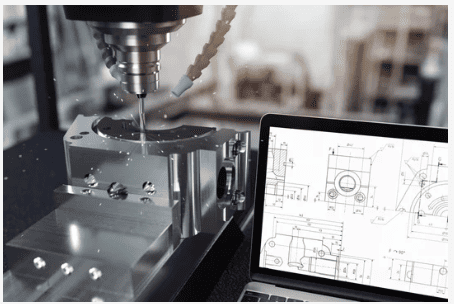
IV. Direct Comparison: CNC Vs Traditional Machining
In the modern era of technology, there is an ongoing debate on the direct comparison of CNC machining and Traditional machining.
This brief exploration undertakes a direct comparison between two distinct approaches: the time-honored traditional machining methods and the technologically advanced Computer Numerical Control (CNC) machining as below.
1. Control and Precision:
- Traditional Machining: Traditional machining largely depends on the operator’s ability and experience, which causes differences in accuracy and precision.
- CNC Machining: CNC machining offers great accuracy and precision because it is already programmed.
2. Speed and Efficiency:
- Traditional Machining: Traditional machining requires manual operation so its time consuming.
- CNC Machining: CNC machining is an automatic machine so, it produces components in very little time and efficiently.
3. Complex Geometries:
- Traditional Machining: Traditional machining requires human touch so, it’s difficult to develop complex geometries sometimes.
- CNC Machining: CNC machining is used where we are required to develop complex geometries with precision.
4. Repeatability:
- Traditional Machining: Prone to variations due to manual control, leading to challenges in achieving consistent results.
- CNC Machining: Ensures high repeatability as the programmed instructions are followed precisely for each iteration, resulting in uniform products.
5. Labor Costs:
- Traditional Machining: Traditional machining requires skilled labor and this skilled labor has high wages so, overall labor cost goes high.
- CNC Machining: CNC machining is automatic in operation so, it reduces the labor cost drastically as compared to others.
6. Material Waste:
- Traditional Machining: There is a large material waste due to human interference and manual operation.
- CNC Machining: As this is preprogrammed, there is low material waste compared to traditional.
7. Quality Consistency:
- Traditional Machining: The quality of components is purely based on the skill set of the operator, and it may vary from operator to operator.
- CNC Machining: CNC machines give constant and consistent results in terms of quality and accuracy.

V. The Advantages of CNC Machining over Traditional Machining
CNC Machining has become one of the superior machining methods by delivering quality results.
Below are some common advantages of CNC machining over traditional machining.
1. Precision and Accuracy:
- CNC machining relies on computerized programming, ensuring precise control over tool movements. This eliminates the variations associated with human skill in traditional machining, leading to consistently accurate and high-quality products.
2. Automation and Efficiency:
- The automation inherent in CNC machining significantly reduces manual intervention, enabling continuous and efficient operation. Tasks are executed rapidly, minimizing production time and enhancing overall efficiency compared to the labor-intensive nature of traditional machining.
3. Repeatability and Consistency:
- CNC machining ensures high repeatability as each job follows the same programmed instructions. This consistency is challenging to achieve in traditional machining, where operator skill and attention to detail can vary.
4. Reduced Labor Dependency:
- CNC machining reduces reliance on highly skilled operators. While traditional machining demands experienced personnel for precise control, CNC machines only require skilled programmers and operators, potentially lowering overall labor costs.
5. Setup Time Optimization:
- CNC machining minimizes setup time as instructions can be stored in the system. Traditional machining involves manual setup for each job, contributing to increased downtime between different manufacturing tasks.
6. Material Waste Reduction:
- CNC machines optimize material usage by precisely following programmed instructions. This helps to reduce material waste so, our overall cost is saved drastically.
7. Consistent Quality Assurance:
- CNC machining ensures consistent quality as the programmed instructions are executed precisely. In traditional machining, variations in operator skill and attention.
VI. Real-Life Applications: Case studies on CNC Machining
In the era of modern technology, CNC machining is used in the entire sector. From aerospace engineering to medical device manufacturing, below case studies below illuminate the real-life applications of CNC machining.
1. Aerospace Industry:
Industry Overview:
CNC machining is used in the aerospace industry to manufacture intricate components such as aircraft components, engine parts, and intricate structures.
Benefits of CNC Machining:
- Precision: CNC machining ensures the precise fabrication of complex aerospace components by meeting its standards.
- Material Optimization: The ability to mill intricate shapes enhances material usage efficiency, reducing waste.
2. Medical Device Manufacturing:
Industry Overview:
CNC machining is used in the medical device industry to manufacture intricate components such as implants, surgical instruments, and diagnostic equipment.
Benefits of CNC Machining:
- Customization: CNC machining allows for the production of custom implants tailored to individual patient needs with high precision.
- Quality Assurance: The automatic function of the CNC machine helps to provide accurate and precise medical components.
- Rapid Prototyping: CNC machining facilitates quick prototyping of medical device designs, accelerating the product development cycle.
3. Automotive Production:
Industry Overview:
CNC machining is used in the automotive industry to manufacture intricate components such as transmission boxes, engine parts, etc.
Benefits of CNC Machining:
- High-Volume Production: CNC machining constantly has a great impact on faster and high-volume production efficiency.
- Cost-Efficiency: Apart from the initial cost, CNC machines are very cost-effective compared to others because they reduce labor costs and faster production as compared to others.
4. Tool and Die Making:
Industry Overview:
A key technology in the tool and die building process, CNC machining creates molds and dies for a range of industrial operations.
Benefits of CNC Machining:
- Complex Geometry: The ability to create complex and finely detailed molds with CNC machining improves the efficiency of manufacturing procedures.
- Accuracy and Consistency: CNC machining ensures the consistent replication of molds, reducing variability and improving overall manufacturing quality.
- Rapid Tool Changes: CNC machining enables quicker tool changes, enhancing the efficiency of the tool and die production process.
5. Electronics Manufacturing:
Industry Overview:
CNC machining is used in the electronics industry to manufacture intricate components such as electronic components, housings, and intricate parts for consumer electronics.
Benefits of CNC Machining:
- Miniaturization: CNC machining helps to manufacture small components used in the electronics segment.
- Tolerance Control: CNC machining helps to maintain tight tolerance which is a very important factor for the electronics industry.
- Prototyping and Customization: CNC machining supports rapid prototyping which helps in the electronics manufacturing industry.
This case study helps us to understand how CNC machines are superior to all other machining methods by delivering good results in terms of accuracy, precision, and overall cost.
This transformation in technology from traditional machining to CNC machining is not limited to the quality of goods but it also to product design and manufacturing process.
VII. Conclusion
In wrapping up, it is quite evident and convincing that CNC machining has numerous advantages over traditional methods.
The accuracy, effectiveness, and flexibility provided by CNC machining completely transform the manufacturing procedures.
By lessening the need for skilled workers, decreasing setup durations, and optimizing material consumption, CNC machining not only guarantees consistent and top-notch results but also contributes to long-term cost efficiency.
In a world where innovation and efficiency hold great importance, adopting CNC machining becomes a well-thought-out decision for industries striving to enhance their production abilities and remain at the forefront of contemporary manufacturing.
 Call Us Today! (+86) 188-2253-7569
Call Us Today! (+86) 188-2253-7569

